AI First Marketing Made Simple: 21 Proven Plays for an Unstoppable Beginner’s Advantage 🚀
AI first marketing isn’t a trend—it’s a practical, step‑by‑step way to work smarter, create faster, and deliver better results. If you’re new to AI, this guide turns big ideas into clear actions you can start today. You’ll learn what to do first, which tools to try, how to avoid common pitfalls, and how to measure real impact.
This article draws inspiration from a recent playbook for leaders and brand builders and reshapes it into a beginner‑friendly action plan—adding fresh examples, updated data, and field‑tested “plays” you can copy and paste into your workflow.
Table of Content:
- 🤖⚡ Why This Moment Matters (And What “AI First” Really Means)
- 🧭 Adopt the AI First Mindset: From Hype to Habits
- 🧑🤝🧑🖥️ Human + Machine: Your Creative Partnership
- ⏳ The “Middle Era”: What to Do Before AGI Arrives
- 🚀 Start Here—21 Proven Plays for AI first marketing
- 🧰 Essential Tools & How to Choose Them
- 🧱 Build a Beginner AI Stack for Marketing
- 📊 Metrics that Matter: Measuring AI productivity
- ⚖️ Responsible AI: Safe, On-Brand, and Compliant
- 🌟 Mini Case Snapshots: What Good Looks Like
- 🔮 What’s Next: Agents, Living Ads, and Synthetic Audiences
- 🙋 FAQs: Beginner Questions About AI First Marketing Answered
- ✅ Key Lessons & Takeaways
🤖⚡ Why This Moment Matters (And What “AI First” Really Means)
A Turning Point You Can’t Ignore
Every decade or so, a new technology reshapes how we live and work. The internet did it in the 90s, social media in the 2000s, and smartphones in the 2010s. Each wave demanded new skills, but they didn’t fundamentally change how we think and create. Artificial Intelligence is different.
Instead of you learning the tool, the tool learns from you. That’s the essence of the AI First approach. You no longer need to adapt your workflow around the software—the software adapts to you. For beginners, this means the barrier to entry has never been lower. You don’t need to be a programmer or a data scientist to use AI effectively. With today’s tools, you can brainstorm campaigns, design visuals, analyze customer feedback, and even draft business strategies—all with a few simple prompts.
What “AI First” Actually Means
The idea of being AI First isn’t about sprinkling AI into your old processes as an afterthought. It’s about flipping the sequence of work. Instead of asking:
- “Can AI help me with this part?”
You start by asking: - “What part of this task can AI do first, and what’s left for me to refine?”
This mindset shift unlocks efficiency. AI handles the repetitive, data-heavy, or first-draft tasks so you can focus on judgment, creativity, and decision-making. Think of AI as your “co-pilot” who sets up the runway, while you decide when to take off and where to land.
Why Now Is the Right Time
There are three reasons beginners should act now, not later:
- Accessibility: Tools like ChatGPT, Canva Magic Studio, and Microsoft Copilot are affordable and easy to use. Many even offer free versions.
- Competitive advantage: Early adopters gain speed. If you learn to leverage AI now, you’ll outpace peers still relying on traditional workflows.
- Skill compounding: The sooner you start, the faster you’ll learn. Prompting, iterating, and refining with AI are skills that compound—every experiment teaches you something that improves the next.
Real-World Beginner Examples
- A freelance marketer uses ChatGPT to draft campaign copy, then polishes it into a client-ready deck in half the usual time.
- A student entrepreneur designs professional social media graphics with Canva’s Magic Design, without needing Photoshop expertise.
- A small shop owner lets Shopify Magic write product descriptions, freeing up hours for customer service.
These aren’t futuristic scenarios—they’re happening right now. And the best part? You don’t need special training to replicate them.
🧭 Adopt the AI First Mindset: From Hype to Habits
Moving Beyond the Buzz
AI dominates headlines, but for many beginners, it still feels abstract. Some fear it’s too advanced, while others think it’s just hype. The truth lies in between: AI is neither magic nor irrelevant—it’s a practical tool that becomes powerful when woven into daily routines.
Adopting an AI First mindset means reframing your relationship with work. Instead of treating AI as a novelty to test once in a while, you build habits where AI naturally becomes your first step in solving problems. Over time, this habit compounds into massive productivity gains.
Simple Habits to Get Started
Here are five small, beginner-friendly ways to turn “AI hype” into daily habits:
- Start every project with AI brainstorming
- Before you outline a blog post, ask ChatGPT for three possible structures.
- Before you design a flyer, ask Canva Magic Design for layout ideas.
- Use AI for “blank page” anxiety
- If writing feels daunting, let AI draft the first 200 words. You can always edit later.
- Automate summaries
- Use Microsoft Teams’ Intelligent Recap or ChatGPT to turn long notes or recordings into digestible summaries.
- Practice micro-prompts daily
- Spend 5 minutes a day trying short prompts: “Summarize this email,” “Generate 5 catchy headlines,” or “Suggest Instagram captions for a bakery.”
- Log your AI wins
- Keep a simple document where you track time saved or new ideas sparked. This helps you see real progress and build confidence.
Shifting from Experiment to Habit
The difference between dabbling in AI and truly adopting it is consistency. When you only experiment once in a while, AI feels like a gimmick. But when you use it daily—even in tiny ways—it becomes second nature. Over time, you’ll instinctively start projects by asking, “What can AI do for me here?” That’s when you know the AI First mindset has clicked.
Common Beginner Mistakes (and Fixes)
- Mistake: Expecting perfect outputs.
- Fix: Treat AI’s results as drafts, not finished products. You’re still the editor-in-chief.
- Mistake: Using AI only for flashy tasks (like writing poems or creating memes).
- Fix: Focus on practical, repeatable workflows: emails, reports, meeting notes, research.
- Mistake: Fearing replacement.
- Fix: Think “co-pilot,” not “pilot.” AI boosts your ability but still needs your judgment, creativity, and ethics.
Why Mindset Matters More Than Tools
Tools will evolve—today it’s ChatGPT and Canva, tomorrow it may be something new. But if you’ve built the habit of thinking AI First, you’ll adapt easily no matter what tool dominates. Skills fade; mindsets stick. By starting with the right mindset, you future-proof your career and stay adaptable in a fast-changing landscape.
🧑🤝🧑🖥️ Human + Machine: Your Creative Partnership
Why Partnership, Not Replacement, Matters
When people hear “AI,” fear often creeps in: “Will machines replace me?” The truth is more nuanced. At its best, AI doesn’t replace humans—it amplifies them. Think of it like a relay race: the AI sprints the first lap by generating drafts, summarizing research, or crunching data, and then you step in to refine, interpret, and decide.
This partnership is the sweet spot for beginners. You don’t need to become an AI engineer. You simply need to learn how to brief AI tools well, treat their outputs as a starting point, and then add the human judgment and creativity that only you can provide.
What Humans Do Best
- Judgment: Deciding which ideas are worth pursuing.
- Creativity: Injecting nuance, tone, and originality.
- Ethics: Guarding against misinformation or harmful bias.
- Connection: Relating authentically to customers and audiences.
What Machines Do Best
- Repetition: Writing 20 ad variants in seconds.
- Summarization: Boiling down long documents into key insights.
- Computation: Analyzing thousands of data points quickly.
- Availability: Working 24/7 without fatigue.
When you merge these strengths, you get a workflow that’s both fast and high quality.
Beginner-Friendly Workflows to Try
- Co-Writing Blog Posts
- Ask ChatGPT to outline a blog post on “sustainable fashion trends.”
- Choose the best structure and then expand sections in your own words.
- Result: faster draft without losing your authentic voice.
- Meeting Summaries + Action Steps
- Use Microsoft Teams’ Intelligent Recap to auto-summarize calls.
- Add your judgment to highlight nuances or next steps AI might miss.
- Design at Scale
- Let Canva Magic Design propose five layouts for a social post.
- You pick the one that feels most on-brand, then polish.
- Email Campaigns
- Use AI to generate subject lines.
- Run a quick A/B test and select the best-performing option.
Each of these workflows shows AI and humans as partners, not competitors.
Avoiding Over-Reliance
One trap beginners fall into is leaning too heavily on AI outputs. If you publish everything AI generates without review, you risk errors, plagiarism, or tone mismatches. The fix is simple: make human review a non-negotiable step. You’re not abdicating responsibility—you’re upgrading your toolkit.
⏳ The “Middle Era”: What to Do Before AGI Arrives
What Is the Middle Era?
We’re living in what experts call the “middle era” of AI. Today’s tools are powerful—they can write, design, analyze, and even hold conversations—but they are not yet AGI (Artificial General Intelligence). AGI would mean machines with broad, human-like intelligence, capable of learning and reasoning across any domain.
So, what does this mean for beginners? It means we have a window of time: AI is advanced enough to change how we work, but still requires human oversight. This window is your chance to build skills, habits, and systems that will keep you relevant when AI inevitably becomes even smarter.
Why Preparation Beats Waiting
Some people think, “I’ll wait until the technology matures.” That’s a mistake. If you wait, you’ll face a steep learning curve later, while early adopters will already have years of practice. Think of it like the early internet: those who built websites in the 90s had an advantage for decades.
By starting now, you gain:
- Skill compounding: Every prompt you write improves your ability.
- Workflow maturity: You’ll have established systems when others are still experimenting.
- Confidence: Instead of feeling overwhelmed by new tools, you’ll welcome them.
Practical Steps to Prepare in the Middle Era
- Educate Yourself Continuously
- Follow newsletters, podcasts, or blogs about AI.
- Dedicate 15 minutes daily to experimenting with one feature.
- Create Your Own “AI Playbook”
- Document what prompts work best for you.
- Note where AI saves the most time in your workflow.
- Set Up Light Governance
- If you’re in a team, create a one-page “AI usage guide.”
- Cover do’s and don’ts: fact-checking, brand voice, data handling.
- Experiment Safely with Data
- Use anonymized or non-sensitive data when testing AI.
- Protect customer privacy at all costs.
- Plan for Upskilling
- Learn adjacent skills like data literacy, prompt design, or basic automation.
- These skills amplify your ability to harness AI more effectively.
How Beginners Can Future-Proof Themselves
Think of this era as a rehearsal. You’re building the muscles—curiosity, experimentation, adaptation—that will make you ready for whatever comes next. Even if AGI takes longer than expected, these skills are already valuable today.
For example:
- A small business owner who documents their AI workflows now will scale faster later.
- A content creator who practices turning AI drafts into authentic, polished content will thrive in a market flooded with generic AI text.
- A student who treats AI as a daily research partner will enter the job market with a skillset employers crave.
A Mindset for the Middle Era
- Curiosity over fear: See each new tool as an opportunity to test, not a threat.
- Practical over perfect: Use AI where it helps, even if the results aren’t flawless.
- Learning over waiting: Every small experiment adds to your experience bank.
This mindset ensures you won’t just survive the middle era—you’ll use it as a launchpad for the next wave.
🚀 Start Here—21 Proven Plays for AI First Marketing
You’ve read about why AI matters and how to build the right mindset. But knowing why isn’t enough—you need to know what to do next. This section gives you 21 practical “plays” you can copy and adapt right away. Each one is beginner-friendly, highly actionable, and designed to help you build confidence while gaining real results.
Think of these plays like recipes: follow them step by step, then adjust to your taste. The more you practice, the better you’ll get at inventing your own.
Foundations (Plays 1–6)
These are your “warm-up drills.” Before you try advanced AI workflows, start here to build comfort and consistency.
1. Run a Two-Week AI Warm-Up
Pick three tasks you do every week—maybe writing emails, summarizing reports, or creating social captions. For two weeks, do each task twice: once the old way, once with AI. At the end, compare speed, quality, and stress. You’ll see clearly where AI makes a difference, and where it doesn’t.
2. Write a One-Page AI Policy for Yourself (or Your Team)
It doesn’t need legal jargon. Just write down:
- Which AI tools you’ll use.
- What kind of data is safe to input.
- How you’ll double-check outputs.
This keeps you confident and consistent.
3. Form a Mini AI Council
If you’re part of a team, create a small group that meets biweekly to share experiments. Rotate membership so everyone gets involved. If you’re solo, join an online AI community for the same benefit: shared learning.
4. Build Your Starter AI Toolkit
For most beginners, this includes:
- ChatGPT for drafting and brainstorming.
- Canva Magic Studio for visuals.
- Microsoft Copilot for office tasks.
- Adobe Firefly for image editing.
Don’t overwhelm yourself—master two tools before adding more.
5. Host a Prompt Challenge
Challenge yourself (or your team) to find the most useful prompt in one week. Share the before/after results. Reward creativity, not perfection. This gamifies learning and spreads useful techniques.
6. Make a 90-Day Roadmap
Write down 10–15 areas where AI might help: emails, customer service, SEO, analytics, ads. Score each by impact vs. effort. Choose three to pilot in the next three months. This gives you focus.
Research & Strategy (Plays 7–10)
AI isn’t just for writing—it’s also a research partner. These plays help you gather insights faster.
7. Competitive Landscape Scan
Ask ChatGPT: “List competitor taglines, offers, and strengths from their websites. Highlight gaps we could exploit.” Always double-check the outputs, but this saves hours of manual research.
8. Auto-Summarize Meetings
Turn on meeting recap tools (like Microsoft Teams Intelligent Recap). Instead of spending hours reviewing notes, you get bullet-point highlights and action items instantly.
9. Customer Vocabulary Mining
Paste anonymized customer reviews, chats, or surveys into AI. Ask it to find recurring phrases, complaints, and praise. Use those exact words in your marketing—it builds instant resonance.
10. Refresh Personas and Journeys
Feed customer data into AI and ask: “Draft 3 personas and a sample journey map.” Then refine them with your expertise. The AI gives you a rough sketch; you add the real detail.
Content & Creative (Plays 11–15)
This is where AI shines for marketers: creating drafts, variations, and visual concepts quickly.
11. Outline to Multi-Format Draft
Start with one short brief (e.g., “launching a new coffee blend”). Ask AI for:
- A blog outline.
- Email subject lines.
- Three social captions.
- Two ad variants.
One input becomes multiple outputs, saving you from repetitive writing.
12. Speed Design with Canva Magic
Upload your text or idea, and let Canva generate layouts. Even if you don’t use them directly, they spark inspiration and cut your design time in half.
13. Safe Commercial Images with Adobe Firefly
Need ad images or product mockups? Use Firefly—it’s trained on licensed data, so you can use results commercially with less risk. Always review before publishing.
14. Experiment with AI Audio and Music
Try tools like Suno or Udio to generate jingles or background tracks. Use them for podcasts, ads, or social content. Keep licensing in mind.
15. Moodboards with Midjourney
Instead of spending hours collecting images, generate a visual moodboard in minutes. Save seeds and prompts so you can recreate styles later.
Personalization, CRM & Email (Plays 16–18)
AI isn’t just creative—it can tailor experiences for your audience.
16. Smarter Email Segmentation
Use predictive features in platforms like Mailchimp. Let AI group your audience by likelihood to engage, then target them with tailored campaigns.
17. Shopify Magic for Product Descriptions
E-commerce owners: let Shopify Sidekick draft descriptions, FAQs, and announcements. Edit for voice, but save hours of time.
18. Borrow Duolingo’s Playbook
Study Duolingo Max. Its AI explains answers and role-plays conversations. Adapt that concept: interactive tutorials, onboarding chats, or customer support flows.
Analytics & Experimentation (Plays 19–21)
Use AI to test ideas and learn what works faster.
19. The Experiment Factory
Create a standard prompt for A/B testing headlines or CTAs. Log results in a shared doc. Over time, you’ll see patterns in what works best.
20. Meeting-to-Dashboard Loop
Auto-summarize meetings each week. Feed the action items into your project tracker. This creates a feedback loop from conversation to execution.
21. Spin Up a Mini AI Lab
Set aside 4 hours a week to try new tools. Document what you learn. This keeps you ahead without distracting from core work.
How to Use These Plays
You don’t need to run all 21 at once. Pick three that feel most relevant today—maybe one from foundations, one from content, and one from personalization. Run them for a month, track results, and then expand.
The goal isn’t perfection. It’s progress. Each play is a chance to build your AI-first reflexes: start with AI, refine with human insight, and repeat. Over time, you’ll see these small shifts compound into massive productivity and creativity gains.
🧰 Essential Tools & How to Choose Them
The Tool Trap Beginners Often Fall Into
One of the first questions beginners ask is: “Which AI tool should I use?” With hundreds of apps and platforms launching every month, it’s easy to feel overwhelmed. The truth is, you don’t need dozens of tools. In fact, chasing shiny new apps often slows you down.
Instead, think of AI tools as ingredients in your kitchen. You only need a few essentials to cook 80% of meals. The rest are optional spices you can add later.
The Three Golden Rules for Choosing Tools
When you evaluate tools, follow these three rules:
- Start with what you already have.
Many apps you use daily—Google Docs, Microsoft 365, Canva—already have AI built in. Explore those before adding more. - Prioritize safety and governance.
Look for features like single sign-on, data privacy options, and admin controls. Even solo marketers should check: “Does this tool save my inputs? Is my data secure?” - Demand real-world demos.
Don’t just watch a polished marketing video. Test your use case with a trial. For example: “Show me how this tool drafts a LinkedIn post for my brand.”
Core Categories of AI Marketing Tools
To make sense of the landscape, divide tools into five essential categories:
- Foundational Models (Text + Vision)
- Creative Design & Media
- Examples: Canva Magic Studio, Adobe Firefly, Midjourney.
- Best for: social media posts, ads, visuals, product mockups.
- Productivity & Collaboration
- Examples: Microsoft Copilot, Notion AI.
- Best for: meeting summaries, notes, presentations.
- Marketing-Specific Platforms
- Analytics & Experimentation
- Examples: Google Analytics with AI Insights, HubSpot AI tools.
- Best for: segmenting customers, spotting trends, testing campaigns.
Beginner Mistakes When Picking Tools
- Mistake 1: Installing too many at once.
- Fix: Pick one in each category max.
- Mistake 2: Expecting perfection from outputs.
- Fix: Treat them as drafts—you’re still the editor.
- Mistake 3: Ignoring governance.
- Fix: Always check where your data goes.
By sticking to these rules, you’ll avoid tool overwhelm and actually see results.
🧱 Build a Beginner AI Stack for Marketing
Why You Need a “Stack”
A stack is just a fancy way of saying “a set of tools that work together.” Instead of juggling random apps, you build a simple ecosystem that covers your key needs. This ensures smooth handoffs between research, creation, and publishing.
The Minimal AI Marketing Stack for Beginners
- Foundation Model: ChatGPT or Claude
- Handles research, outlines, drafts, and ideation.
- Beginner tip: save your best prompts in a Google Doc.
- Creative Layer: Canva Magic + Adobe Firefly
- Canva for layouts and quick designs.
- Firefly for safe, professional images and video variations.
- Collaboration Layer: Microsoft Copilot or Notion AI
- Summarizes meetings and organizes notes.
- Keeps your projects moving.
- Distribution Layer: Mailchimp or HubSpot AI
- Drafts and personalizes email campaigns.
- Optimizes send times for higher open rates.
- Experimentation Layer: A/B Testing Prompts
- Use AI to generate 5 subject lines, then test.
- Log results in a spreadsheet to spot winning patterns.
Example: A Day in the Life with a Beginner AI Stack
- Morning: Use ChatGPT to summarize overnight industry news into a short email briefing.
- Midday: Draft a LinkedIn article outline with AI, then polish it yourself.
- Afternoon: Use Canva Magic Studio to design visuals for the post.
- Evening: Schedule emails in Mailchimp with AI-powered send-time optimization.
One stack, one workflow, multiple outputs.
How to Scale Your Stack Over Time
- Phase 1 (Month 1–2): Master 2–3 core tools.
- Phase 2 (Month 3–4): Add one tool in a new category (e.g., analytics).
- Phase 3 (Month 6+): Explore custom GPTs or agents that connect with your internal data.
Scaling slowly ensures you don’t drown in options.
Safety Net: Governance for Your Stack
Even beginners need guardrails:
- Never paste sensitive client data into public AI tools.
- Always review outputs for accuracy.
- Keep a shared doc (if in a team) with “approved tools” and “do’s and don’ts.”
This way, your stack grows safely without creating risks.
📊 Metrics that Matter: Measuring AI Productivity
Why Measuring Matters for Beginners
It’s easy to get excited about AI tools—especially when they produce flashy results. But excitement alone won’t help you prove value, whether to yourself, your boss, or your clients. What truly matters is being able to say: “This tool saved me X hours” or “This workflow improved campaign performance by Y%.”
Without metrics, you’re left guessing. With metrics, you can identify what’s working, cut what’s not, and scale what drives impact. Even if you’re just starting, measuring your AI productivity ensures you build sustainable habits instead of chasing hype.
The Three Core Metrics to Track
- Time Saved
- Ask yourself: “How long did this task take me before AI, and how long does it take now?”
- Example: Writing a 500-word blog post may have taken 3 hours; with AI drafts, you may reduce it to 1 hour. That’s a two-hour saving.
- Quality Lift
- Rate outputs on a simple 1–5 scale: clarity, creativity, accuracy.
- Or track the number of edits/revisions required. If AI outputs cut editing time in half, that’s a quality improvement.
- Throughput
- Count how many tasks or campaigns you complete per week.
- If your content calendar expands from 2 posts/week to 5 posts/week thanks to AI, that’s measurable throughput growth.
Beginner-Friendly Tracking Methods
- Use a simple spreadsheet. Create columns for Task, Pre-AI Time, With-AI Time, Quality Rating, and Notes.
- Adopt time-tracking apps. Even free tools like Toggl or Clockify help you measure task duration.
- Gather feedback. Share AI-assisted outputs with teammates or clients and ask: “Is this better, worse, or the same?”
Common Pitfalls to Avoid
- Measuring vanity metrics. Don’t obsess over “number of AI prompts used.” Focus on outcomes, not activity.
- Not accounting for learning time. At first, experimenting may feel slower. That’s normal. Track trends over weeks, not just one day.
- Expecting immediate ROI. Think of AI adoption like building a muscle—progress compounds with consistent practice.
Turning Metrics Into Business Stories
Numbers are powerful, but stories make them stick. Imagine saying to your boss:
- “Using AI, I cut our blog drafting time by 60%, which freed me to launch a new email series.”
That narrative shows value beyond raw numbers. For beginners, combining metrics with storytelling builds credibility and momentum.
⚖️ Responsible AI: Safe, On-Brand, and Compliant
Why Responsibility Matters
AI gives you speed, but speed without guardrails can backfire. If you publish unverified outputs, share sensitive data with tools, or ignore brand tone, you risk damaging trust. Responsible AI isn’t just about compliance—it’s about protecting your reputation.
The Three Pillars of Responsible AI
- Safety
- Never input confidential client data into public AI tools.
- Use anonymized or sample data for testing.
- Regularly update your knowledge of AI regulations, such as the EU AI Act.
- On-Brand Voice
- AI doesn’t know your brand tone unless you teach it.
- Keep a style guide handy: tone (formal or casual), words to use, words to avoid.
- Example: If your brand avoids jargon, include a reminder in your prompts: “Write in a friendly, conversational style, no buzzwords.”
- Compliance
- Ensure generated visuals are licensed for commercial use. (Adobe Firefly is safer here than random free AI image generators.)
- Track and document how you use AI in workflows. This creates transparency if questions arise later.
Practical Guardrails for Beginners
- Create an AI Usage Guide. Write one page with do’s and don’ts for yourself or your team.
- Double-Check Facts. Never publish AI-generated claims without verification.
- Run a “Red Flag” Checklist. Before releasing AI-assisted work, ask:
- Does it misrepresent information?
- Could it offend or exclude an audience?
- Does it align with brand tone?
How to Stay Ahead of Regulation
Regulations are evolving quickly. Instead of trying to predict every law, follow these best practices:
- Transparency: Be open when AI is involved in outputs.
- Human Oversight: Always have a person review final work.
- Accountability: Keep records of how AI contributed to your content.
Responsible AI in Action: A Beginner Scenario
Imagine you’re creating a social ad campaign with AI-generated visuals. You:
- Generate drafts with Adobe Firefly (safe for commercial use).
- Review them against your brand’s style guide.
- Double-check that all claims in the captions are factual.
- Keep a simple log: “Created with AI, reviewed by [your name], approved on [date].”
This process is lightweight, but it proves you’re serious about responsibility.
🌟 Mini Case Snapshots: What Good Looks Like
Theory is helpful, but nothing makes the power of AI more real than seeing it in action. These snapshots show how individuals and teams—many of them starting from scratch—have put AI-first marketing into practice. The goal here isn’t to overwhelm you with corporate jargon; it’s to give you simple, human stories that you can learn from and adapt.
Case 1: The Solo Marketer Who Multiplied Output
A freelance social media manager used to spend 15 hours a week writing captions and designing posts. After adopting ChatGPT and Canva Magic Studio, she cut that to under 6 hours. AI handled the first drafts of captions and suggested content calendars, while Canva provided instant layouts. She still customized every piece for tone and brand alignment, but her productivity more than doubled.
Takeaway for beginners: Use AI for the heavy lifting (drafting and formatting), but keep final control over voice and context.
Case 2: The Retailer Who Rebuilt Product Descriptions
An online shop selling handmade candles struggled to keep up with hundreds of product listings. The founder turned to Shopify Magic, which generated descriptions and FAQs for every product. Instead of spending weeks updating the catalog, it took just days.
Takeaway for beginners: Automate the repetitive “long tail” tasks. Even if each description seems small, together they eat up time you could spend on growth.
Case 3: The Startup That Ran a Prompt Challenge
A small SaaS company wanted to encourage employees to experiment with AI. They hosted a two-week “prompt challenge.” Each employee shared before-and-after results from their workflows. One sales rep cut proposal drafting time from 2 hours to 20 minutes. Another marketer discovered an AI-powered workflow for clustering customer feedback.
Takeaway for beginners: Learning sticks when it’s shared. If you’re on a team, make experimentation public. If you’re solo, join communities online where people share prompts and wins.
Case 4: The Educator Who Reinvented Student Engagement
A language tutor adopted techniques inspired by Duolingo Max, using AI chatbots to role-play conversations with students. Instead of static exercises, students practiced dynamic dialogues. Engagement rates went up, and the tutor gained back prep time.
Takeaway for beginners: Borrow proven patterns from bigger brands. You don’t have to invent from scratch—adapt what already works.
Case 5: The Consultant Who Turned Meetings Into Action
A consultant running multiple projects enabled Microsoft Teams Intelligent Recap. Every meeting ended with automatic summaries and action lists. No more lost details, no more “Who’s doing what?” confusion.
Takeaway for beginners: Meeting fatigue is real. Use AI to convert talk into tasks automatically so you can focus on execution.
🔮 What’s Next: Agents, Living Ads, and Synthetic Audiences
Once you’ve built confidence with today’s tools, it’s natural to ask: “Where is all this going?” We’re entering a new phase of AI—one that goes beyond copilots. These upcoming shifts may sound futuristic, but they’re closer than you think. And preparing now will help you adapt smoothly.
Agents: From Co-Pilot to Co-Worker
Most AI today waits for your prompt. Agents, by contrast, take initiative. They can plan, execute, and loop through tasks with minimal oversight. Imagine an agent that:
- Monitors your competitors’ websites weekly.
- Summarizes changes into a dashboard.
- Suggests your next campaign angle.
For beginners, this doesn’t mean you’ll lose control. It means you’ll spend less time on routine monitoring and more time making decisions.
Living Ads: Campaigns That Adapt in Real Time
Traditional ads are static—you design them once and launch. Living ads are dynamic, adjusting text, visuals, or offers based on who’s viewing them. For example:
- A sports brand ad that highlights running shoes to marathoners but yoga gear to casual exercisers.
- An email subject line that rewrites itself for different time zones and customer preferences.
As platforms like Meta and Google embed AI deeper into ad systems, beginners can expect tools that do this automatically.
Synthetic Audiences: Testing Before Spending
Marketers often waste budget testing campaigns live. Synthetic audiences—AI-powered simulations of real customers—allow you to test messaging before going live. You can ask: “How would Gen Z respond to this copy?” and get simulated reactions.
For beginners, this means less wasted ad spend and more confidence in your creative decisions.
How Beginners Can Prepare for What’s Next
- Keep experimenting. If you’re comfortable with copilots now, you’ll be ready for agents tomorrow.
- Think modular. Build workflows you can plug new tools into easily.
- Stay curious. Follow case studies and industry updates. You don’t need to master every new feature, but knowing what’s possible is powerful.
A Practical Beginner Scenario
Imagine you’re launching a new product line:
- Today: You use ChatGPT for copy, Canva for visuals, Mailchimp for campaigns.
- Near Future: An AI agent tracks competitor campaigns, generates living ads that adapt by audience, and tests variants against synthetic personas before launch.
What sounds like science fiction now will soon feel as natural as scheduling a post in Canva.
🙋 FAQs: Beginner Questions About AI-First Marketing Answered
Even with all the examples, plays, and strategies we’ve covered so far, beginners still have common questions when they first approach AI-first marketing. Let’s clear them up one by one.
1. Do I need to know how to code to use AI for marketing?
Not at all. Most modern tools—ChatGPT, Canva Magic, Microsoft Copilot—are designed for everyday users. Think of them as apps, not programming projects. If you can type a question into Google, you can use AI tools.
2. Isn’t AI just a trend that will fade?
AI is not a passing fad—it’s becoming infrastructure. Just like email or social media, it will evolve but won’t disappear. Starting now means you build habits and skills before the market gets crowded.
3. How much time should I dedicate to learning AI?
Begin with 15 minutes a day. Try a new prompt, explore one feature, or document one workflow improvement. Small, consistent practice compounds into confidence.
4. How do I know which AI tool is best for me?
Ask two questions:
- Does it integrate with my current workflow?
- Does it actually save me time or improve results?
Start with the tools you already use (like Microsoft Office or Canva) and expand gradually.
5. Won’t AI make my work generic?
Only if you let it. Think of AI drafts as clay—you shape them into something unique. Your creativity, judgment, and brand voice are what turn generic drafts into compelling content.
6. Is AI safe for my business data?
It depends on the tool. Never paste confidential data into public models. For sensitive work, look for enterprise solutions that guarantee privacy and compliance.
7. How do I convince my boss or team to try AI?
Start small. Run a two-week pilot and document measurable results (time saved, more content produced, better engagement). Present the before-and-after comparison—it speaks louder than theory.
8. What if AI makes mistakes?
It will. That’s why human review is non-negotiable. Treat AI like an eager intern: fast, creative, but in need of guidance. You’re still the decision-maker.
9. How do I avoid falling behind with new AI updates?
Follow one or two trusted newsletters, blogs, or creators. You don’t need to chase every shiny update. Focus on deepening your use of a few core tools.
10. Can AI replace my job?
AI will reshape jobs, not erase them. People who learn how to work with AI will be more valuable, not less. Think augmentation, not replacement.
✅ Key Lessons & Takeaways
We’ve covered a lot of ground—mindsets, tools, workflows, case studies, and what’s coming next. Here are the core lessons to carry with you:
- AI First means flipping the sequence. Start with AI for the heavy lifting, then refine with your expertise.
- Partnership beats replacement. Machines handle speed and scale; humans add judgment, creativity, and empathy.
- Measure what matters. Track time saved, quality lifted, and throughput gained. These metrics build credibility.
- Build a simple stack. Don’t chase 50 apps—master a few tools that cover text, visuals, and collaboration.
- Responsibility is non-negotiable. Guard privacy, verify facts, and maintain brand voice at all times.
- Experiment consistently. Small, daily habits lead to breakthroughs. Document your wins, share them, and scale what works.
- Stay curious about the future. Agents, living ads, and synthetic audiences are coming. Starting now ensures you’re ready when they arrive.


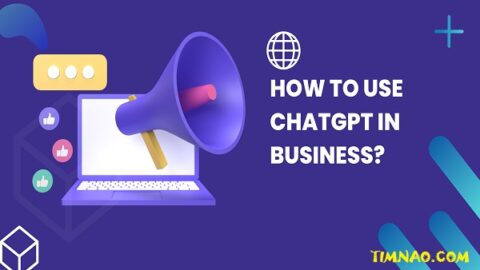

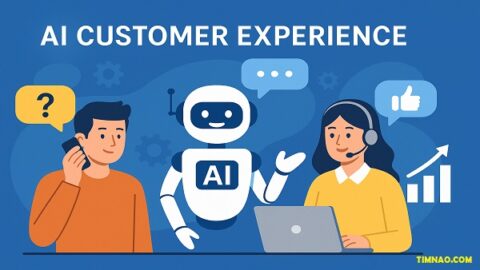


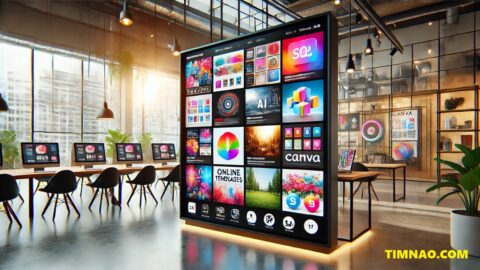
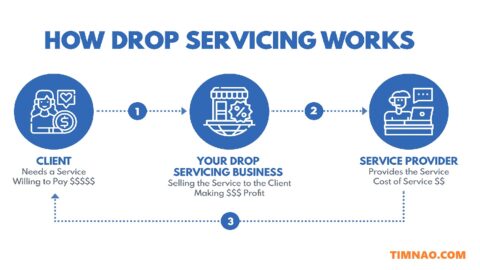
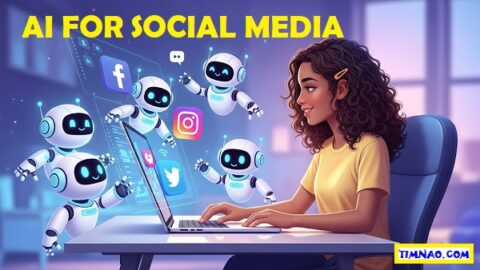
Appreciate the recommendation. Will try it out.
Thanks
I?¦m no longer certain the place you are getting your information, but great topic. I needs to spend some time finding out more or understanding more. Thanks for magnificent information I was in search of this information for my mission.
Very interesting subject , thanks for putting up.